Why we do not fly into space on vacation
Here I had a chance to fly on veterans of the domestic civil aircraft industry: the Yak-42 and Tu-154, and looking at the tattered stripes of sealing gaskets, the ragged paint on the fuselage, and clouds flying under the shaking wing, I thought about space. Namely, over the question: why so far our ships have not plowed into outer space, there are no Moscow-Moon flights, and why is no one rushing to Jupiter in search of an alien Obelisk?
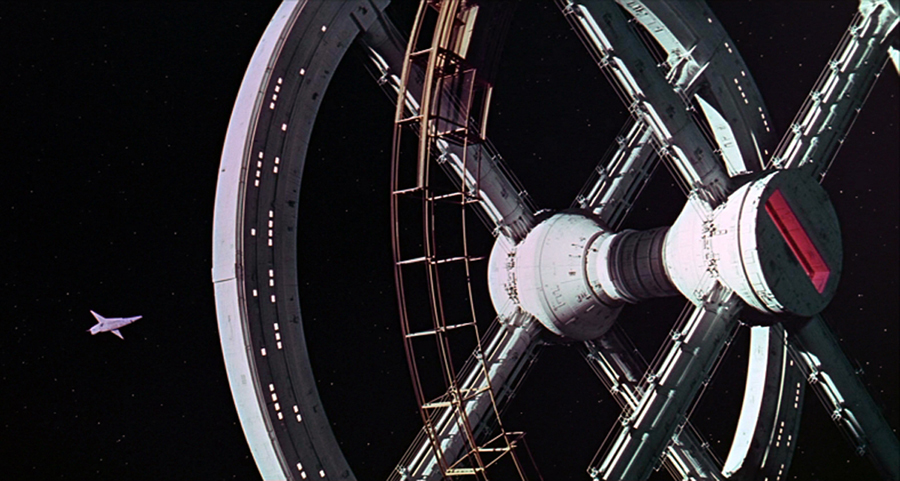
It is difficult to believe in someone, but terrestrial technologies have long since reached a level that can provide at least mass flights to the Moon and back. You can fly to Mars, if you're lucky with the weather. In fact, modern aircraft are in many ways not inferior to spacecraft, but in some ways superior.
What is the difference?
The pressure drop in a normal passenger flight is not as strong as in a space flight, but the aircraft body has to experience pressure drops hundreds of times during operation, unlike a spaceship, if it's not a Shuttle / Buran. At an altitude of 10 km, atmospheric pressure is ⅓ from the surface, i.e. the difference in pressure that a plane and a spaceship can withstand in orbit is only a third of the atmosphere.
Is one atmosphere a lot or a little? For example, you can feel for yourself what two atmospheres plunged into water for 10 meters. Such an immersion on the shoulder is simply for a trained person without any equipment, and athletes generally dive100 or more meters, what can we say about the possibilities of nuclear submarines or bathyscaphes. For example, the record bathyscaphe "Trieste" in 1960 successfully withstood nearly 1,100 atmospheres, which is more than eleven times the pressure on the surface of Venus.

In 1985, the Komsomolets submarine set a diving record of up to 1,027 m, i.e. withstood 100 atmospheres, which is equivalent to landing on Venus. The normal immersion depth of modern nuclear submarines is 300 meters, which again is 30 times higher than the load on the spacecraft.
Another thing is that when launching from Earth to orbit, the ship can withstand much heavier loads due to high acceleration, so the Yak-42 is unlikely to reach space if it is simply screwed onto a rocket. But if you use traditional ships to fly into orbit, and light carrier on the route "Earth orbit-moon", then the task is simplified.
Cosmic cold is also not as dangerous as it might seem. I once talked about this and will repeat myself. Here is a graph of the readings of the thermometer of the near-Earth satellite TechedSat 2. Readings in degrees Celsius:

As you can see, there are no horrors with “minus one hundred” or “absolute zero”.
A spaceship freezes only when it is in the shadow, but if we are talking about interplanetary flights, then in flight it will be difficult to find a shadow. Although the surface of the moon will have to be insulated ... Or build amusement parks at the peaks of eternal light . As you move away from the Sun, it will become colder, but on the scale of the solar system, Mars is not so far, and on the way to Jupiter you already have to grab a stove with you.
The problem of thermal insulation of an airplane is more complicated. Vacuum is an excellent thermos, and the plane is constantly cooled by an incoming stream of air. The submarine is even worse: the heat capacity of the water is much higher, though the water is never colder than -1 Celsius. On board the same spacecraft or station, a mass of units are constantly working that heat the internal environment. Therefore, for a spaceship, cooling rather than heating is often more relevant. There is no wind in space, fans overboard are also useless, so you have to dump heat only through infrared radiation. You can take a look at the huge radiators of the International Space Station. They can be confused with solar panels, but their difference is that radiators are always located in the perpendicular plane to the batteries.
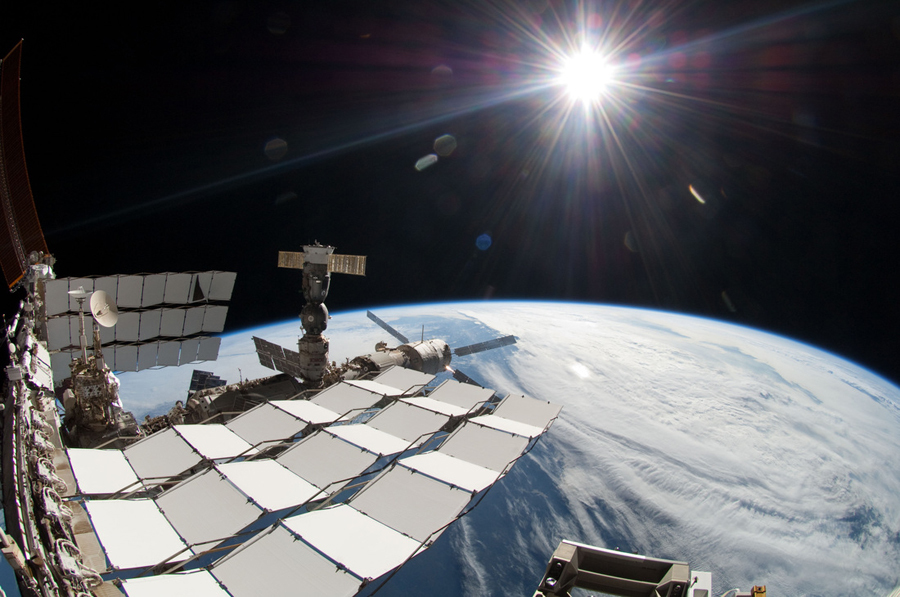
The thermal management system is an important component of the spacecraft, which we will talk about separately.
The danger of radiation in space is also seriously overestimated. There are still myths circulating on the Internet that flying to the moon is impossible due to the destructive effects of cosmic radiation. The ISS crew, according to supporters of this myth, lives only thanks to the Earth’s magnetic field.
In fact, the Earth’s magnetic field provides only partial protectionfrom cosmic radiation, and is not able to withstand high-energy interstellar and intergalactic particles. The real barrier to cosmic radiation is only the terrestrial atmosphere, and the closer to earth the better. Therefore, I would not recommend sunbathing in the alpine resorts, or at least do it in aluminum underpants.
For pilots in outer space, the effect of cosmic radiation is about two times more intense than at the altitude of the ISS, but not because the station flies under the cover of a magnetic field, but because the Earth itself covers it. Those. cosmic particles bombard the near-Earth station only “from above”, and on interplanetary trajectories travelers will get from all sides.

Even the thinnest atmosphere of Mars halves the radiation exposure, unlike the conditions in orbit. Thus, the background radiation on the surface of Mars, as on board the ISS. This is despite the fact that the planet does not have a magnetic field at all. Accordingly, in open space near Mars, in calm sunny weather, radiation is only two times higher than on the ISS.
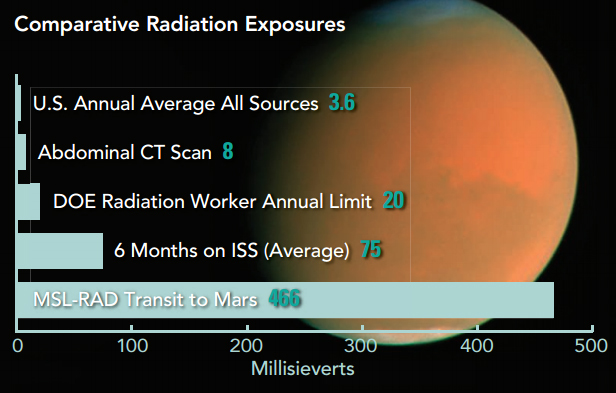
However, after studying the radiation conditions during the flight of the Curiosity rover, NASA came to the conclusion that flying to Mars is too dangerous for humans due to exceeding the cumulative dose. But this excess is only one and a half times, and only on condition that the journey in one direction takes 360 days. If we envisage more efficient engines for the flight to Mars, and reduce the flight time by at least half, then the radiation threat is already within acceptable limits.
The only thing that poses a real radiation hazard to astronauts is solar flares and solar proton events. Here, of course, serious protection will be required, but they are already working on it. Although even the hull of a spaceship is able to provide significant protection to pilots.
Here is a graph comparing the intensity of radiation exposure on the NASA ACE satellite (red line), which is located 1.5 million km from Earth toward the Sun, with the readings of the RAD sensor on board the Curiosity rover (white dots), which is inside the descent at the time of observation capsules on a migratory path.

A direct correlation of readings is visible, but the “bare” ACE receives exposure several orders of magnitude more. If a more complex protection scheme is used for the inhabited compartment of pilots and passengers, then the effect of solar radiation will be even weaker. The easiest option is to shield yourself with a layer of water or fuel, anyway you have to take a lot of them with you. In addition, the probability of a solar flare getting into the ship is rather low - this happens once a month to six months, if you focus on the results of Curiosity. Those. Going on a week-long tour to the moon, it is enough to check the forecast of sunny weather without loading with heavy radiation protection.
Radiation belts, which are formed around the Earth under the influence of the magnetic field of the planet, also pose a danger only in conditions of a solar flare. At such moments, the intensity of the particles in them increases thousands of times. But in calm times, they can be relatively safely overcome in a short way, in the wake of the Apollo.
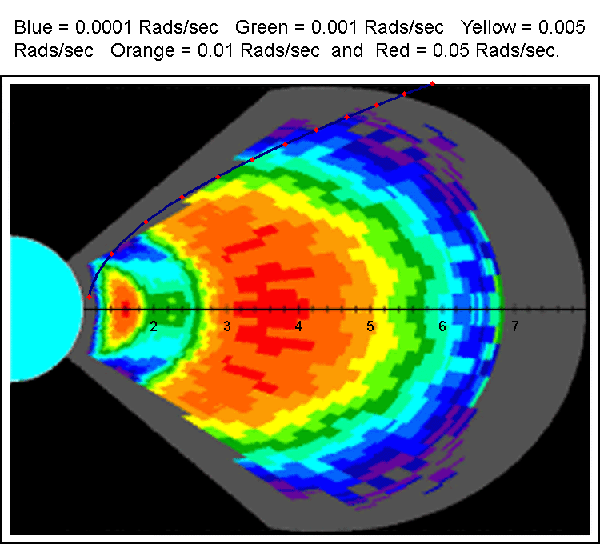
In my review, I am not trying to prove that traveling to other planets is easy and simple. A spaceship is more complicated than an airplane or a submarine, it must operate in an absolutely hostile environment, you cannot jump out of it with a parachute, you will not sail to the surface with a breathing mask. Numerous life support devices have to be duplicated and tripled, and then still have to manage to fit them into an extremely limited volume and make them as light as possible. Therefore, the spacecraft is still a piece of manual work, and the development of a new one is a long and difficult task.
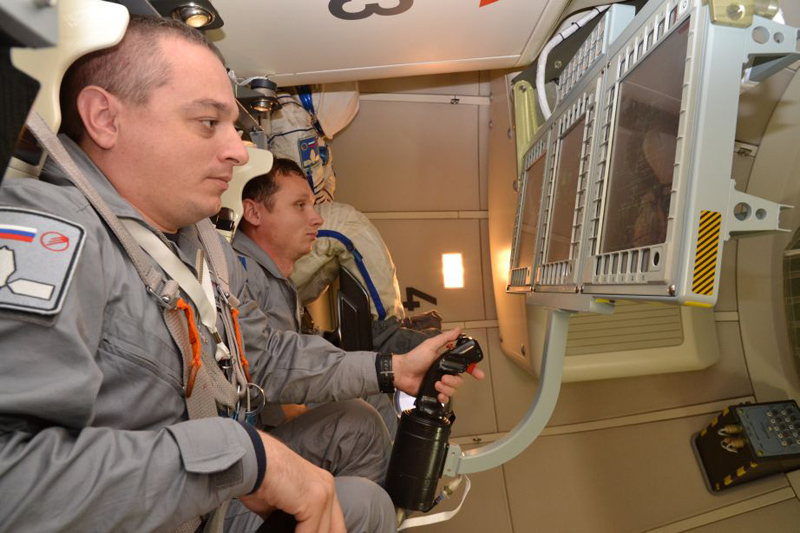
Blog of the test cosmonaut PTK NP
But at the same time, mankind managed to create a colossal aviation industry, for example, Boeing-747 alone has produced almost 1,500 pieces since 1969. And during the Cold War, two powers were measured by hundreds (!) Of submarines. But what about aviation and the fleet, with the current technology, some Bentley or Maybach will not be inferior in technical perfection to a spaceship. Therefore, technologically now there are no obstacles to catch a couple of dozen Earth-Moon space liners, Earth-Mars heels and one to send to Jupiter, with tetris instead of the on-board computer.
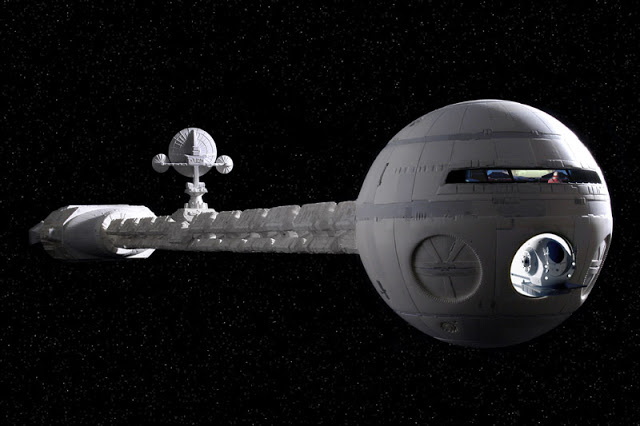
Why are they still not there?
It may seem to some that the cause is the high cost of the space program. But, for example, NASA paid Boeing about half as much to develop the CST-100 spacecraftwhat went into the development of the Sukhoi Superjet 100. And all US spending on civilian space from 1958 to 2011 did not exceed the military budget for 2011.

The reason for the underdevelopment of the space passenger industry lies in the low interest of people in such flights. Civil aviation has developed largely due to the close economic ties of the United States and Europe. For a fast crossing of the Atlantic for a long time, sailors fought, and the baton they took the aviation. The development of science, technology and the aircraft industry was in response to commercial demand.
In other words, there are buyers on airline tickets, submarines and Maybach. There are no buyers to the moon and Mars. There are no amusement parks, there are no oil fields and gold quarries, there are no stock exchanges, there are no hostile lunatics / Martians under a star-striped sickle and hammer ... So it turns out that earthlings can fly for a long time, but there is no one who would like to pay for the space transportation industry. More precisely, there are, but their number and solvency is still negligible.
For the development of manned space exploration, the beginning of regular space communications, the development of the interplanetary economy and business, humanity needs an outpost in another world. Whether it will be on the Moon or Mars is not so important, but as long as it is not there, we will hang out at the surface of the Earth, which once again retells the Soviet doctrine of the "exploration of the solar system by automatic machines", born after the defeat in the lunar race.

It is difficult to believe in someone, but terrestrial technologies have long since reached a level that can provide at least mass flights to the Moon and back. You can fly to Mars, if you're lucky with the weather. In fact, modern aircraft are in many ways not inferior to spacecraft, but in some ways superior.
What is the difference?
The pressure drop in a normal passenger flight is not as strong as in a space flight, but the aircraft body has to experience pressure drops hundreds of times during operation, unlike a spaceship, if it's not a Shuttle / Buran. At an altitude of 10 km, atmospheric pressure is ⅓ from the surface, i.e. the difference in pressure that a plane and a spaceship can withstand in orbit is only a third of the atmosphere.
Is one atmosphere a lot or a little? For example, you can feel for yourself what two atmospheres plunged into water for 10 meters. Such an immersion on the shoulder is simply for a trained person without any equipment, and athletes generally dive100 or more meters, what can we say about the possibilities of nuclear submarines or bathyscaphes. For example, the record bathyscaphe "Trieste" in 1960 successfully withstood nearly 1,100 atmospheres, which is more than eleven times the pressure on the surface of Venus.

In 1985, the Komsomolets submarine set a diving record of up to 1,027 m, i.e. withstood 100 atmospheres, which is equivalent to landing on Venus. The normal immersion depth of modern nuclear submarines is 300 meters, which again is 30 times higher than the load on the spacecraft.
Another thing is that when launching from Earth to orbit, the ship can withstand much heavier loads due to high acceleration, so the Yak-42 is unlikely to reach space if it is simply screwed onto a rocket. But if you use traditional ships to fly into orbit, and light carrier on the route "Earth orbit-moon", then the task is simplified.
Cosmic cold is also not as dangerous as it might seem. I once talked about this and will repeat myself. Here is a graph of the readings of the thermometer of the near-Earth satellite TechedSat 2. Readings in degrees Celsius:

As you can see, there are no horrors with “minus one hundred” or “absolute zero”.
A spaceship freezes only when it is in the shadow, but if we are talking about interplanetary flights, then in flight it will be difficult to find a shadow. Although the surface of the moon will have to be insulated ... Or build amusement parks at the peaks of eternal light . As you move away from the Sun, it will become colder, but on the scale of the solar system, Mars is not so far, and on the way to Jupiter you already have to grab a stove with you.
The problem of thermal insulation of an airplane is more complicated. Vacuum is an excellent thermos, and the plane is constantly cooled by an incoming stream of air. The submarine is even worse: the heat capacity of the water is much higher, though the water is never colder than -1 Celsius. On board the same spacecraft or station, a mass of units are constantly working that heat the internal environment. Therefore, for a spaceship, cooling rather than heating is often more relevant. There is no wind in space, fans overboard are also useless, so you have to dump heat only through infrared radiation. You can take a look at the huge radiators of the International Space Station. They can be confused with solar panels, but their difference is that radiators are always located in the perpendicular plane to the batteries.

The thermal management system is an important component of the spacecraft, which we will talk about separately.
The danger of radiation in space is also seriously overestimated. There are still myths circulating on the Internet that flying to the moon is impossible due to the destructive effects of cosmic radiation. The ISS crew, according to supporters of this myth, lives only thanks to the Earth’s magnetic field.
In fact, the Earth’s magnetic field provides only partial protectionfrom cosmic radiation, and is not able to withstand high-energy interstellar and intergalactic particles. The real barrier to cosmic radiation is only the terrestrial atmosphere, and the closer to earth the better. Therefore, I would not recommend sunbathing in the alpine resorts, or at least do it in aluminum underpants.
For pilots in outer space, the effect of cosmic radiation is about two times more intense than at the altitude of the ISS, but not because the station flies under the cover of a magnetic field, but because the Earth itself covers it. Those. cosmic particles bombard the near-Earth station only “from above”, and on interplanetary trajectories travelers will get from all sides.

Even the thinnest atmosphere of Mars halves the radiation exposure, unlike the conditions in orbit. Thus, the background radiation on the surface of Mars, as on board the ISS. This is despite the fact that the planet does not have a magnetic field at all. Accordingly, in open space near Mars, in calm sunny weather, radiation is only two times higher than on the ISS.

However, after studying the radiation conditions during the flight of the Curiosity rover, NASA came to the conclusion that flying to Mars is too dangerous for humans due to exceeding the cumulative dose. But this excess is only one and a half times, and only on condition that the journey in one direction takes 360 days. If we envisage more efficient engines for the flight to Mars, and reduce the flight time by at least half, then the radiation threat is already within acceptable limits.
The only thing that poses a real radiation hazard to astronauts is solar flares and solar proton events. Here, of course, serious protection will be required, but they are already working on it. Although even the hull of a spaceship is able to provide significant protection to pilots.
Here is a graph comparing the intensity of radiation exposure on the NASA ACE satellite (red line), which is located 1.5 million km from Earth toward the Sun, with the readings of the RAD sensor on board the Curiosity rover (white dots), which is inside the descent at the time of observation capsules on a migratory path.

A direct correlation of readings is visible, but the “bare” ACE receives exposure several orders of magnitude more. If a more complex protection scheme is used for the inhabited compartment of pilots and passengers, then the effect of solar radiation will be even weaker. The easiest option is to shield yourself with a layer of water or fuel, anyway you have to take a lot of them with you. In addition, the probability of a solar flare getting into the ship is rather low - this happens once a month to six months, if you focus on the results of Curiosity. Those. Going on a week-long tour to the moon, it is enough to check the forecast of sunny weather without loading with heavy radiation protection.
Radiation belts, which are formed around the Earth under the influence of the magnetic field of the planet, also pose a danger only in conditions of a solar flare. At such moments, the intensity of the particles in them increases thousands of times. But in calm times, they can be relatively safely overcome in a short way, in the wake of the Apollo.

In my review, I am not trying to prove that traveling to other planets is easy and simple. A spaceship is more complicated than an airplane or a submarine, it must operate in an absolutely hostile environment, you cannot jump out of it with a parachute, you will not sail to the surface with a breathing mask. Numerous life support devices have to be duplicated and tripled, and then still have to manage to fit them into an extremely limited volume and make them as light as possible. Therefore, the spacecraft is still a piece of manual work, and the development of a new one is a long and difficult task.

Blog of the test cosmonaut PTK NP
But at the same time, mankind managed to create a colossal aviation industry, for example, Boeing-747 alone has produced almost 1,500 pieces since 1969. And during the Cold War, two powers were measured by hundreds (!) Of submarines. But what about aviation and the fleet, with the current technology, some Bentley or Maybach will not be inferior in technical perfection to a spaceship. Therefore, technologically now there are no obstacles to catch a couple of dozen Earth-Moon space liners, Earth-Mars heels and one to send to Jupiter, with tetris instead of the on-board computer.

Why are they still not there?
It may seem to some that the cause is the high cost of the space program. But, for example, NASA paid Boeing about half as much to develop the CST-100 spacecraftwhat went into the development of the Sukhoi Superjet 100. And all US spending on civilian space from 1958 to 2011 did not exceed the military budget for 2011.

The reason for the underdevelopment of the space passenger industry lies in the low interest of people in such flights. Civil aviation has developed largely due to the close economic ties of the United States and Europe. For a fast crossing of the Atlantic for a long time, sailors fought, and the baton they took the aviation. The development of science, technology and the aircraft industry was in response to commercial demand.
In other words, there are buyers on airline tickets, submarines and Maybach. There are no buyers to the moon and Mars. There are no amusement parks, there are no oil fields and gold quarries, there are no stock exchanges, there are no hostile lunatics / Martians under a star-striped sickle and hammer ... So it turns out that earthlings can fly for a long time, but there is no one who would like to pay for the space transportation industry. More precisely, there are, but their number and solvency is still negligible.
For the development of manned space exploration, the beginning of regular space communications, the development of the interplanetary economy and business, humanity needs an outpost in another world. Whether it will be on the Moon or Mars is not so important, but as long as it is not there, we will hang out at the surface of the Earth, which once again retells the Soviet doctrine of the "exploration of the solar system by automatic machines", born after the defeat in the lunar race.
